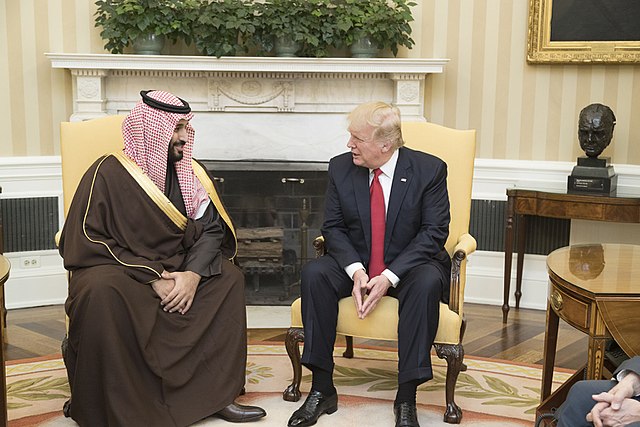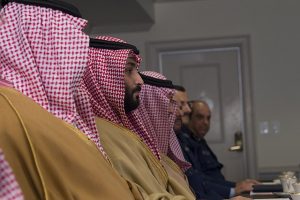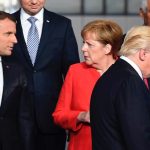by Shireen T. Hunter
Less than a month after Iran’s consulate in Basra was attacked, a group of terrorists claiming to be members of the Movement for the Liberation of Ahwaz attacked a military parade in the capital of Iran’s Khuzestan province, killing 25 people and wounding many more. When the Basra consulate incident took place , some commentators in Iran speculated that the attackers also wanted to target Khorramshahr and Abadan. Now it seems that they were not too wrong.
The Ahwaz attacks also occurred shortly after operations by Kurdish insurgents belonging to the Iranian Kurdish Democratic Party in Iran’s mostly Kurdish inhabited regions in the country’s northwest. These attacks prompted the revolutionary guards to target the bases inside Iraqi Kurdistan from which they were operating. These back-to-back attacks raise the question of whether the United States and its regional Arab allies have adopted a strategy of besieging Iran in many of its vulnerable provinces, possibly as a prelude to more direct and large-scale military operations against Tehran.
Irrespective of whether this is the case, some of the problems that Iran faces in several of its western and southern provinces are caused not by a widespread desire for independence but by decades of neglect and mounting economic problems and thus growing popular frustration. For example, the central government has long neglected the Kurdistan province. Its economic conditions as well as its communications, roads, railroads, and other infrastructure lag behind the rest of the country. Various governments in the last 30 years have promised a fairer treatment of the so-called deprived regions, which includes Kurdistan, but have failed to deliver. Part of this inability has been because of the misuse of available funds for foreign adventures in Syria and Lebanon, corruption, and the impact of sanctions, itself an outcome of Iran’s Middle East policies.
The case of Khuzestan is even more serious. The region, which includes areas inhabited by ethnic Arabs, valiantly resisted Saddam Hussein’s armies and remained loyal to the country. The province also suffered the most devastation as a result of the Iran-Iraq war. However, after the war ended, the reconstruction in Khuzestan proceeded very slowly. Later, problems such as air pollution from sandstorms added to the residents’ other difficulties. However, the central government was slow in tackling these difficulties. Many projects, including badly needed water projects, which should have been long finished are still incomplete. The once mighty Karun river is almost dry. Under these circumstances, the risk that people could be tempted by the siren call of external agitators has inevitably increased. However, these problems do not per se explain the latest developments.
Iran’s problems in Khuzestan have always have had an external dimension. Arabs believe that the southern part of the province belongs to Arabs, and they refer to it as Arabistan.
The history, however, is more complicated. Khuzestan means the land of the Khuzi or the original inhabitants of the region of Susiana. The Arab population was introduced to the region following the Arab/Islamic invasion of the seventh century CE. During the Safavids , the region was divided in two parts and the southern part was referred to as Arabistan. In the nineteenth century, the growth of British influence in the Persian Gulf undermined Iran’s position in its southern provinces. In 1856, the British bombed the city of Khorramshahr (then known as Muhamarrah) partly to force Iran to leave Herat.
In the last years of the Qajar dynasty, Sheikh Khazal ruled the southern part of the province as a vassal of Tehran. During World War I, when Iran seemed on the brink of dissolution, Sheikh Khazal rebelled against the central government, hoping that Britain would support his claims. However, partly because of the Bolshevik revolution, Britain had changed its approach to Iran. Instead of favoring its disintegration, Britain saw Iran as a useful buffer against Bolshevik Russia and thus refused to back Sheikh Khazal.
As part of his policy of subduing local khans and potentates and establishing a functioning central government and bureaucracy, Reza Shah Pahlavi put down Khazal’s rebellion. In the following decades, the region was favored in terms of development, partly because of its oil reserves. The Islamic revolution and the Iraqi invasion changed the situation.
Meanwhile, Arab governments, as well as Arab nationalist and pan-Arabists, continued to see southern Khuzestan as Arab land. From the 1950s through the 1970s, radical Arab states from Nasser’s Egypt and Saddam Hussein’s Iraq, used the Arabistan issue as a cudgel to beat Iran. They promoted separatism in the region and set up fronts for the liberation of Ahwaz and Arabistan. Some Arab states openly championed Iran’s disintegration. Tariq Aziz , Saddam Hussein’s foreign minister said that “five small Irans is better than one big Iran.” In more recent decades , Saudi Arabia and Egypt have championed separatist movements in the region.
However, thus far, their activities had been limited to holding conferences, like one held in 2005 in Cairo. No direct action of any magnitude was taken inside Iran, although the Movement for the Liberation of Ahwaz had been involved in the sabotage of oil pipelines and possibly oil installations and other infrastructure. These most recent attacks pose the question of whether Saudi Arabia, as promised by Crown Prince Muhammad bin Salman a short while ago, is taking the war inside Iran? And does he have the American blessing to do so?
If the former advisor of the leader of Abu Dhabi is to be believed, the answer is yes, at least as far the UAE, Saudi Arabia, and possibly Egypt are concerned. Abdul Khalegh Abdullah tweeted that “we had warned Iran.” He also said that the attack was not terrorism, because it was against military targets. Other Arab states, including Kuwait and Oman, condemned the incident. However, the ultimate message of recent events is that the noose around Iran’s neck is being tightened .
Iran is experiencing one of the most perilous periods of its long and turbulent history. To navigate these difficult times, Iran’s leaders need to display wisdom, realism, and flexibility, not bravura and emotionalism. Most of all, they must put Iran’s survival within its current borders above any other goal, revolutionary or otherwise.






The proto-Elamite culture is the oldest written culture in the world and it began in what is now called Khuzestan, Shireen.
Human migration out of Africa settled in this area before anywhere else some 20,000 years ago. Please study the Genome Project.
The people of the Iranian Plateau are genetically very close. Arab, and other ethnic groups all are part of the same family, no matter what the religious texts say.
Thank you Ms Shireen Hunter for the balanced and fair article! There’s always a first time for being fair for everyone! At this time, Iran has to play it smart because it doesn’t have the resources or the stomach to start a regional war especially against the Holy Land which it wil anger the rest of the Islamic world!
“Abdul Khalegh Abdullah tweeted that “we had warned Iran.” He also said that the attack was not terrorism, because it was against military targets.”
Remind me again when Adu Dhabi declared that there was an armed conflict between the UAE and Iran?
Because absent an armed conflict – and there is none between those two countries – then this attack is completely illegitimate. You can’t attack another country’s “military targets” and then claim that this is alright, quite above board, no problems because, you know, we weren’t shooting at the civvies.
Doesn’t matter, because absent an armed conflict you aren’t entitled to shoot at anything, irrespective of whether the people you are shooting at are wearing a uniform or if they are wearing jeans.
And by pointing out that this attack came after “we had warned Iran” then you are admitting that this is terrorism i.e. you are using violence in an attempt to force a change in the behaviour of a government.
Again, it doesn’t matter if you are directing that violence at the members of a military parade, because absent an armed conflict – and there is none – then you are not entitled to shoot at anything belonging to Iran.
However, if they aimed militarily but in fact more than half of the killed were ordinary people, so definitely a pure terrorist attack!
Who wants expensive oil?